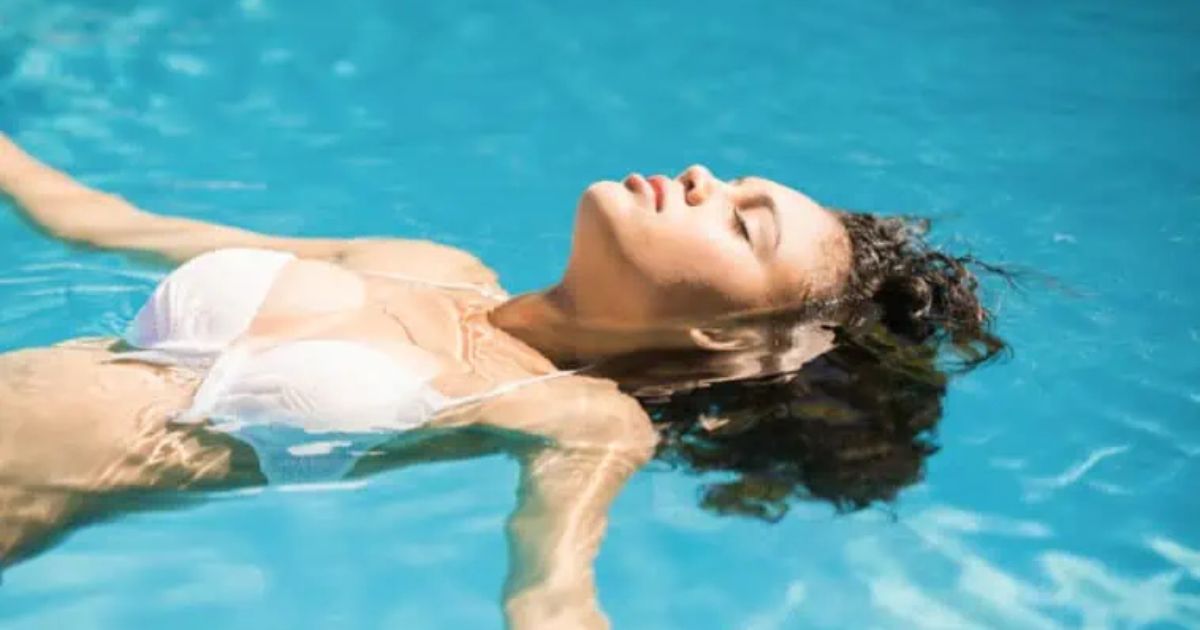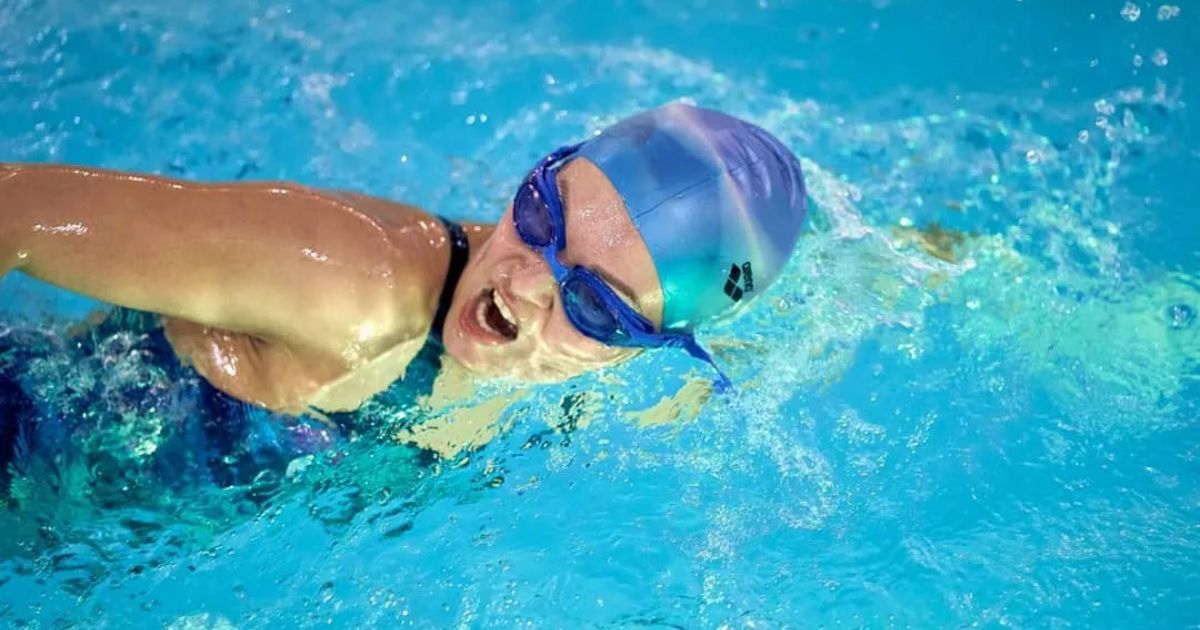Ever wondered why your hair seems to have a mind of its own after a dip in the pool? You may have noticed that chlorine has a peculiar way of giving your locks a little extra bounce and curl. But why does this happen? In this guide, we’ll explore the science behind why chlorine makes your hair curly. We’ll uncover the role of moisture in hair curling and delve into the effects of chlorine and porosity on your hair shape.
But don’t worry, we’ll also share tips on how to minimize the effects of chlorine on your hair and even offer some natural remedies for chlorine damage. So, if you’re ready to dive in and discover the secrets behind chlorine-induced curls, let’s get started!
Key Takeaways
- Chlorine alters the texture and curl pattern of hair.
- Chlorine strips natural oils from the hair, causing dryness and brittleness.
- Using a moisturizing shampoo and conditioner can help combat chlorine buildup and maintain hair health.
- Choosing the right swim cap, such as silicone or latex, can provide better protection against chlorine.
Science Behind Chlorine and Hair
If you’ve ever wondered why chlorine makes your hair curly, the science behind it can be explained by the chemical reactions that occur when chlorine interacts with the proteins in your hair. When chlorine comes into contact with the proteins in your hair, it causes the proteins to break down. This breakdown of proteins weakens the structure of your hair, making it more susceptible to damage.
Chlorine can strip the natural oils from your hair, leading to dryness and frizz. Furthermore, the chemical reactions between chlorine and the proteins in your hair can alter the hydrogen bonds that give your hair its shape. This alteration can result in a change in the texture of your hair, causing it to become curly or wavy. So, the next time you take a dip in the pool, remember the science behind why chlorine makes your hair curly.
Role of Moisture in Hair Curling
When chlorine interacts with the proteins in your hair, it not only weakens the structure and alters the hydrogen bonds, but it also affects the moisture levels, playing a significant role in hair curling. The moisture in your hair is essential for maintaining its shape and texture. Here are five ways in which moisture influences hair curling:
- Moisture helps to define the curl pattern by providing elasticity to the hair strands.
- Adequate moisture prevents frizz and promotes smooth, well-defined curls.
- Insufficient moisture can lead to dry and brittle hair, resulting in looser or less defined curls.
- Excessive moisture can cause the hair to become overly soft and lose its curl pattern.
- Moisture balance is crucial for maintaining the natural moisture barrier of the hair, which helps to retain moisture and prevent damage.
Understanding the role of moisture in hair curling is important when considering the effects of chlorine and porosity on hair shape.
Effects of Chlorine and Porosity on Hair Shape
To understand how chlorine affects the shape of your hair, let’s explore the impact of chlorine and porosity on your hair’s overall structure. Chlorine, a common chemical found in swimming pools, can have a profound effect on the shape of your hair. Porosity, on the other hand, refers to your hair’s ability to absorb and retain moisture. When chlorine comes into contact with porous hair, it can penetrate the cuticle layer and disrupt the protein structure within the hair shaft.
This disruption alters the natural shape of your hair, causing it to become curly or wavy. The more porous your hair is, the more susceptible it is to the effects of chlorine, resulting in a more pronounced change in hair shape. Understanding the effects of chlorine and porosity on your hair can help you make informed choices about protecting and maintaining your hair’s natural shape.
Minimizing Effects of Chlorine on Hair
To minimize the effects of chlorine on your hair, you can take proactive measures to protect and nourish it. Here are five key strategies to consider:
- Pre-wet your hair: Before swimming, saturate your hair with non-chlorinated water. This helps prevent chlorine from being fully absorbed into the hair shaft.
- Apply a protective leave-in conditioner: Use a leave-in conditioner specifically designed to shield your hair from chlorine. Apply it evenly from root to tip before entering the pool.
- Wear a swim cap: A swim cap creates a physical barrier between your hair and the chlorine-filled water, reducing its exposure.
- Rinse your hair immediately after swimming: After leaving the pool, rinse your hair thoroughly with clean water to remove any chlorine residue.
- Deep condition regularly: Use a deep conditioning treatment once a week to replenish moisture and repair any damage caused by chlorine exposure.
Natural Remedies for Chlorine Damage
After taking proactive measures to protect your hair from chlorine damage, you can also explore natural remedies to further mitigate its effects. Natural remedies can help restore moisture, repair damage, and maintain the health of your hair. Here are some natural remedies you can try:
| Natural Remedy | Benefits |
|---|---|
| Apple Cider Vinegar | Removes chlorine buildup and restores pH balance |
| Coconut Oil | Deeply moisturizes and strengthens hair |
| Aloe Vera | Soothes scalp and promotes hair growth |
| Honey | Provides hydration and improves hair elasticity |
| Avocado | Nourishes and adds shine to hair |
Preventing Chlorine Damage to Curly Hair
To effectively prevent chlorine damage to your curly hair, use a clarifying shampoo after swimming. This will help remove any chlorine residue that may have accumulated on your hair and scalp. In addition to using a clarifying shampoo, consider the following tips to protect your curly hair from chlorine damage:
- Wet your hair thoroughly before swimming to minimize chlorine absorption.
- Apply a leave-in conditioner or hair oil to create a barrier between your hair and the chlorine.
- Wear a swim cap to further protect your hair from direct contact with chlorine.
- Rinse your hair immediately after swimming to remove any chlorine residue.
- Deep condition your hair regularly to restore moisture and prevent dryness caused by chlorine exposure.
Fixing Green Hair Caused by Chlorine
If you’ve noticed your hair turning green after swimming in chlorine, there are several steps you can take to fix this issue. Firstly, you can try using a clarifying shampoo specifically designed to remove chlorine buildup. Look for shampoos that contain ingredients like EDTA or sodium thiosulfate, as these can effectively remove the green tint from your hair.
Additionally, you can try using a vitamin C treatment by dissolving vitamin C tablets in water and applying the mixture to your hair. The acid in the vitamin C helps to neutralize the chlorine and eliminate the green color. Finally, you can also consult a professional hairstylist who can provide further advice and treatments to fix the issue.
| Method | Description | Pros | Cons |
|---|---|---|---|
| Clarifying Shampoo | Removes chlorine buildup | Effective | May strip natural oils |
| Vitamin C Treatment | Neutralizes chlorine | Natural remedy | May require multiple treatments |
| Professional Help | Expert advice and treatments | Customized solutions | Costly |
Keeping Hair and Eyes Healthy in Chlorine Water
To keep your hair and eyes healthy while in chlorine water, it’s important to take certain precautions and follow a regular maintenance routine. Here are some key steps you can take:
- Protective gear: Wear a swim cap to shield your hair from direct contact with chlorine. Goggles can also help protect your eyes from irritation.
- Pre-swim rinse: Before entering the pool, wet your hair with fresh water. This helps to minimize chlorine absorption and creates a barrier between your hair and the pool water.
- Post-swim rinse: After swimming, rinse your hair thoroughly with fresh water to remove any residual chlorine. This helps prevent chlorine buildup and potential damage.
- Moisturizing shampoo and conditioner: Use a moisturizing shampoo and conditioner specifically designed to combat the drying effects of chlorine. These products can help restore moisture and keep your hair healthy.
- Deep conditioning treatments: Incorporate regular deep conditioning treatments into your hair care routine to nourish and repair any damage caused by chlorine exposure.
Following these steps will help ensure that your hair and eyes stay healthy and vibrant, even when swimming in chlorine water.
Choosing the Right Cap for Curly Hair in the Pool
When choosing the right cap for your curly hair in the pool, consider the size and material that will best protect your hair from chlorine. The purpose of a swimming cap is to create a barrier between your hair and the water, reducing the amount of chlorine that comes into contact with your curls.
It is important to choose a cap that fits snugly around your head to prevent any water or chlorine from seeping in. Look for caps made of silicone or latex, as they are typically more durable and provide better protection against chlorine, which can make hair curly. Avoid caps made of fabric or mesh, as they may not effectively protect your hair from the effects of chlorine. By selecting the appropriate cap, you can maintain the health and integrity of your curly hair while enjoying your time in the pool.
Pre and Post Swimming Routine for Curly Hair
To protect your curly hair from the damaging effects of chlorine, incorporate a pre and post swimming routine into your pool sessions. Take these steps to ensure your hair stays healthy and retains its natural curl pattern:
- Pre-swim: Before entering the pool, wet your hair thoroughly with fresh water. This helps to minimize chlorine absorption by filling your hair shafts with clean water, reducing the amount of chlorine your hair can absorb.
- Apply a protective leave-in conditioner: Use a leave-in conditioner specifically formulated to protect hair from chlorine damage. Apply it evenly throughout your hair, focusing on the ends where the hair is most vulnerable.
- Wear a swim cap: Put on a swim cap to create a barrier between your hair and the chlorine-infused water. This helps to minimize contact and prevent chlorine from penetrating your hair shafts.
- Post-swim rinse: Rinse your hair immediately after swimming to remove any residual chlorine. Use fresh water to thoroughly rinse your hair, ensuring that all traces of chlorine are eliminated.
- Deep condition: After rinsing, apply a deep conditioning treatment to replenish moisture and restore elasticity to your curls. Leave it on for the recommended time and rinse thoroughly.
FAQs
Why does water make your hair curlier?
Water disrupts the hydrogen bonds in hair, causing it to swell and adopt a curlier texture. This change is more pronounced in hair with a natural inclination for curls.
How do you fix curly hair after swimming?
After swimming, use a leave-in conditioner or detangler to moisturize and untangle curly hair. Gently comb through to prevent breakage and maintain your curls’ natural shape.
Is it good to have chlorine in your hair?
Chlorine can strip hair of natural oils, leading to dryness and damage. It’s advisable to rinse hair thoroughly after swimming and use a clarifying shampoo to remove chlorine and maintain healthy hair.
Conclusion
In conclusion, the presence of chlorine in water can cause hair to become curly due to its ability to strip the hair of moisture and increase its porosity. This can lead to changes in the hair’s shape and texture. To minimize the effects of chlorine on curly hair, it is important to use protective measures such as wearing a swim cap and using natural remedies to restore moisture and repair damage. For example, a case study showed that regularly using a deep conditioning treatment after swimming can help maintain the health and shape of curly hair.


